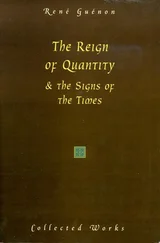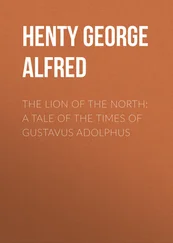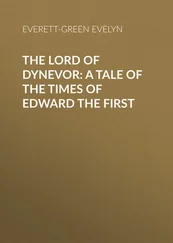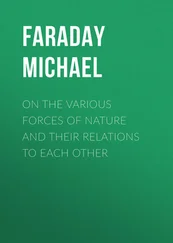At a distance moorhens look dull black but, in fact, they are dark brown above and deep blue beneath, with a red-and-yellow beak and green legs adding further colour.
Ferns still provide some green in the bare woods. By the side of streams and ditches, there are often large, feathery clumps of male fern (this is the name of the plant, not the sex). Some of the fronds are still growing upright, some have jack-knifed with their top half drooping, some are old and brown and are already half-submerged in the water.
On wet rocks and walls, and on hedge banks, there are tufts of hart’s-tongue, which has long, leathery leaves like straps, with the brown spores visible in rows on the underside.
 10th February
10th February
ONE OF THE first hedgerow shrubs to show leaves and flowers is the cherry-plum. Here and there bright green leaves are already appearing along the twigs, and the brilliant white flowers will soon follow. Cherry-plum is often confused with blackthorn because the flowers are similar, but the dense masses of blackthorn flowers come out well before the leaves, and the blackthorn twigs are far more spiny. Also, the blackthorn is unlikely to be in flower for another month yet. Tightly woven blackthorn hedges full of young twigs are like lines of misty purple along the field edges just now.
Flocks of black-headed gulls are still out in the fields, all standing facing the wind so that their feathers do not get ruffled. In winter they spread all over Britain except onto mountain tops, and many come here from as far away as Poland or Russia. Some of them now have almost the complete chocolate-coloured hood of their summer plumage. They will soon be returning to their noisy nesting colonies, which are found not only among sand dunes and on saltmarshes along the coast but also inland on the reedy edges of lakes and tarns.
11th February 
LONG-EARED OWLS are mysterious birds that are found in most parts of Britain but are rarely seen. They normally come out at night, and during the day sit in the depths of bushes and trees. They can sometimes be detected looking out from these roosts with their cat-like faces. They stare at one with orange eyes, and if they are alarmed they raise their long ear-tufts. Even when the bushes are bare, the streaky brown body of these owls blends with the twigs and helps to camouflage them. At this time of the year they are most often found near the sea, where there may be several of them roosting in a single large bush.
Short-eared owls have relatively unnoticeable ear-tufts. They hunt over marshes and lonely farmland for mice and voles, and are often out and about in daytime. They wheel round in the air, then flap and glide, with wings held in a V shape, just above the grass. They will take a small bird if they can. They sometimes come down to earth and crouch low. In summer they nest chiefly on moorland. There are more of them around in winter, since we often have large numbers of visitors from the continent.
 12th February
12th February
IN THE MOUNTAINS and along craggy coasts, male ravens are showing off to the females. They nose-dive from high in the sky, and sometimes even roll over in the air and glide on their backs for a moment. They will also soar around in wide circles.
Although they are much larger than their equally black relatives, the rooks and carrion crows, the size of a distant bird in flight is often hard to judge. However, they can usually be picked out by their massive beaks and longer-looking necks. If they call, there is no mistaking them: they have a deep, vibrant croak that is almost as much like a rumble in the earth as a cry in the sky.
The large leaves of cuckoo pint, or lords and ladies, are now coming up in many ditches. They are like glossy-green arrowheads, often stained with shapeless black blotches, and frequently growing in clumps. They will be followed before long by the distinctive greenish-white hood curling round a purple, truncheon-like spike.
Growing about them in the ditches are young, fresh-green nettles (which already sting).
 13th February
13th February
GREY, OR COMMON, herons are busy rebuilding their nests in treetop heronries. These are generally beside lakes or on islands, and in clumps of trees which have dense vegetation such as rhododendrons beneath them. The birds come back to the same nests year after year, and the nests get bigger and bigger as more sticks are added.
The herons greet their mates at the nest with curious ceremonies. A bird standing on the nest will point its long neck and beak up vertically as its mate lands in front of it, then they will bow their heads low and snap their beaks with a loud clattering sound. It seems to be a bonding display.
Sweet violets are opening on hedge banks and at woodland edges. The flowers rise on fragile-looking single stems from a rosette of heart-shaped leaves, and they nod in the wind. The side petals droop, while the lower petal is like a lip. The sweet scent is remarkably strong for such a small flower, and the flowers were once strewn on the floors of houses. Sometimes pink or white flowers can be found. Dog violets, which are very similar but scentless, will not be out for a while yet.
 14th February
14th February
ON ELDER TREES, the first new leaves are opening. Their fresh green colour stands out against the dry-looking grey stems, which are full of fissures and which crack easily. Inside the stems there is a soft white pith that has a surprising human use: it holds botanical specimens firm while they are being sliced into thin sections. Later in the year the white flowers will be used to make a scented cordial and the black berries will help to make a wine. On sycamore trees the pointed, egg-shaped buds are growing plumper: they are noticeably green already.
Here and there tufts of green leaves, like small whisks, are breaking out of the hawthorn twigs. It is usually the same tree or same patch of hedge that comes out so early each year. Occasionally, there is some forsythia entangled in a hawthorn hedge, and the yellow flowers are opening now.
 15th February
15th February
NOW THAT THE ground is frozen again, blackbirds, song thrushes and robins are finding it hard to get the earthworms that they feed on. This is an important time to put food out for them. A robin will come to a bird table, but the other two species prefer to feed on the ground, and the song thrush will not venture far from the shelter of a hedge or bush. Bread, cheese or any scraps will help them but it is also possible to buy mealworms from bird-food firms and in some garden centres, and these will be particularly appreciated by these birds.
In February and March it is also important to keep on providing nuts and seeds for the mainly seed-eating birds, such as greenfinches. Although spring is slowly coming on, last autumn’s wild seeds are running out by now, and there is greater food shortage among birds than there was in midwinter. The new season’s insects will help to remedy matters as it becomes warmer.
Читать дальше

 10th February
10th February










